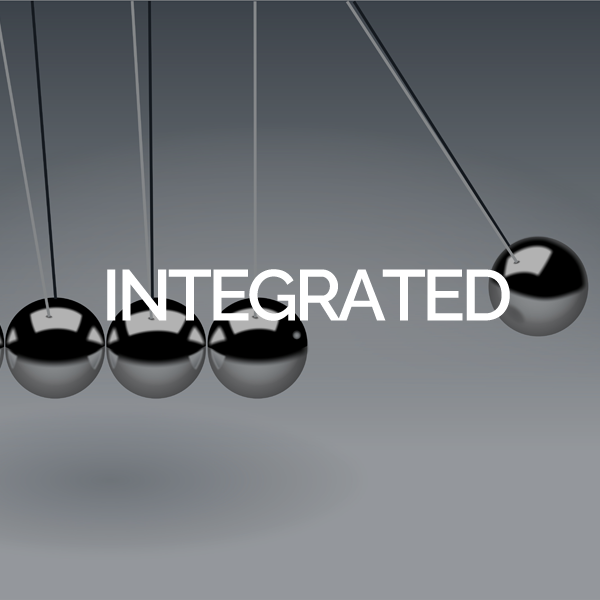Integrated planning
Too many people tend to regard the schedule as the plan. This is probably because the last piece of the jigsaw of planning is the schedule and it becomes one of, if not the, most important control documents. But, of necessity, the schedule is a derivative view of several other important perspectives which need to be integrated to have a balanced view of the whole situation. If you are not familiar with or do not understand these alternative perspectives it isn’t possible to make sensible adjustments to the schedule as the ‘knock-on’ effects aren’t effectively mapped in the latter document.
Because the schedule along with all other aspects of the plan are about delivering the project’s scope the start point for planning process must be the identification of the scope. As soon as you declare this you walk into a potential minefield.
Some people tend to think of the scope as what the project must do (activities), others what it must achieve (outcomes) and, yet others, what products it must deliver (outputs). The last of these views is interesting as it is the point of unity between the first two views. That is to say that all the tasks and activities within a project are aimed at the production of a set of outputs. Equally, outcomes can only be achieved through modifying the physical environment and the way that people relate to it, and this too can only be achieved through producing the appropriate outputs. So, it is quite clear that we must understand the full range of products or deliverables that the project must create to succeed. The majority of these will likely be persistent products but there will be the need for interim, development and management products too (such as the plan itself, for example). Conventionally this is represented through the product breakdown structure (PBS) which is our first perspective on the integrated plan.
In creating the PBS, you can start to identify which of the products is most meaningful to you and over which you’d like to, or need to, exert greater control. Perhaps those that have a significant impact on the sponsor’s benefits position, or maybe those that relate to your critical success factors, or possibly the ones with significant risks attached. These and their sub-products in the PBS become potential milestones and checkpoints to you. Regardless of how the schedule flexes these items of ‘scope’ remain your North Star and if this is a time-critical project the ‘window’ in which they deliver may be an important control consideration for you too.
Once clear what it is that we have got to bring into existence, the next big question is how will we go about achieving this? This is the origination of the work breakdown structure (WBS) which identifies which tasks will give rise to which products and which groupings and sequences of which tasks depend on one another and how they relate. Again, it is obvious, when you think about it, that you cannot conceive a WBS until you have, at least a rudimentary, PBS.
Sharing a detailed understanding of the relevance, significance, and latitude for float of the various tasks and their dependencies among the team is a great way of building and sharing clarity of purpose and motivation and this stage of the planning process is often amongst the most revealing. Our second perspective on the plan is therefore the WBS.
Again, it is most usually the case that we can’t bid for resource until we know what skill types are required, in what quantity and at what periods in time. So, until the WBS is stabilised we don’t know, in detail, how our organisational breakdown structure (OBS) should look. The estimates of effort, developed against each task in the WBS must be translated into durations of tasks to develop a clear OBS against which to secure the necessary resources. As with the previous two process steps, during this stage of integrated planning we will be making numerous assumptions, testing the limits of the constraints, and identifying potential risks and hazards. These should all be recorded in the appropriate registers as it is this valuable output that provides a significant degree of control across the project and without the necessity for, or exclusive dependence on, the schedule.
Equally it isn’t until this third stage of the process that you derive a reliable view against which to allocate costs and their spend profiles. Whilst you might have been able to identify significant items of capital expenditure for some of the primary deliverables in the first stage, until you understand your OBS and when you will need to access resources you can’t infer period-on-period expenditures. So, about the point at which you understand all the products, processes, resources, and risks that you propose to manage is the point at which you can start to finalise your cost breakdown structure (CBS) itemising all cash requirements and expenditures along with a first view of when the costs will arise – although the full view won’t be available until scheduling is completed with all risks and constraints factored in. The CBS can clearly be looked at from either a product, process, or resource perspective; but interestingly, each different perspective will give you a different cost. This is because of variations in estimating and assumption making, some of the value of this integrated approach is that it allows the examination and contrast of such variations in the perspectives to provide a richer overall picture within a frame of more realistic expectations.
The final perspective to derive, prior to creating the schedule, is that of risk. The logs of assumptions, constraints and risks will have been growing through the previous three stages but now it is time to turn our attention to project specific risks. Because the plan is a hypothetical view of the future it is fraught with uncertainty and contingent events which depend on how the world actually ‘pans out.’ Thinking through all these options, angles and alternative approaches and their consequences is precisely what risk management is about; ‘what will we do if this happens? Or if that doesn’t occur as expected?’ are the very questions that risk planning is addressing. In the next blog we will look at change capable planning and why it is so important, but it is that proper planning processes force us through this chain of thought that Eisenhower styled as ‘indispensable.’ As you examine each of the first four stages of the planning process outlined above you are forced to think about what else could or might happen and what you would do about it – this is of huge value.
Only when you have a view of these four aspects is it sensible to try and create a schedule and apply the milestones and tasks to the timeline that will, most likely, be your primary control document. But the value of this integrated planning approach isn’t simply that it provides you with a richer picture and better framed expectations of how the project can safely proceed. It can, and should, also be used to immerse the team in the process of generating the plan; this gives a clarity of understanding and engagement with the project that it is hard to achieve as simply and constructively through any other process.
So, a frequently asked question is what, if the plan isn’t the Gantt chart, does the plan look like? The answer is both easy (it’s a suite of different documents) and elusive (it’s what you need it to be). The suite of documents will likely, at a minimum, include the PBS, the WBS, the dependency network, an OBS, a RAID log (or whatever your organisational acronym is for the control documents covering, risks, assumptions, issues, and dependencies) and the schedule. It might, optionally, also include a stakeholder engagement and communications plan, special and specific governance arrangements and dispensations and any other artefacts that have been brought about by consideration of multiple situations and contingent responses to them.
Following the simple process of products first, processes second, resources third and, inter-alia, risks, assumptions dependencies and constraints, takes us through the journey to creating the consolidated plan which culminates in a sound schedule and the most appropriate monitoring and control points.
CAPABILITY DEVELOPMENT
CITI develops and evolves the project, programme and portfolio management capability and talent available to organisations to deliver change. We are a single destination for clients who want to improve their organisational capability development in order to deliver change more successfully.
CONSULTANCY SERVICES
Our team of consultants are highly qualified to help organisations successfully manage transformation programmes, complex projects and the change impacts that result. Indeed, within our project management consultancy they have all been in senior roles across diverse organisations, managing change through programmes and projects.
TRAINING COURSES
Our management training courses include – masterclasses, accredited / qualification-based training courses and CITI’s own Beyond Method learning events. All are specifically designed to improve the leadership skills, capability and talent within those organisations that depend upon programmes and projects to thrive, change and innovate.
CAPABILITY ASSESSMENT
With the promise of more predictable delivery and benefits achievement, having the right people in the right place at the right time is the key to success. This involves recognising, and then realising, the full potential of individuals and teams by using our project management capability assessment framework services.
WHY CHOOSE CITI
CITI Limited is one of the first, and longest standing, niche consultancies that has led the charge in developing change and project management thinking and essential supporting tools. These are consistently used to assist very capable and intelligent people within a variety of sectors (including IT, communications, financial services, government, and the infrastructure sector), who are undisputed experts in their own disciplines, but need understanding of the project world and how to successfully implement change and new ideas both effectively and efficiently.

Nick Dobson, Principal Consultant
Nick is a highly experienced consultant in project and programme management and the sponsorship of such initiatives.
A practitioner, with over 25 years of experience, he has been deeply involved in projects, throughout the lifecycle, as well as discharging operational management functions in a variety of sectors. Nick can be contacted via email at NDobson@citi.co.uk







